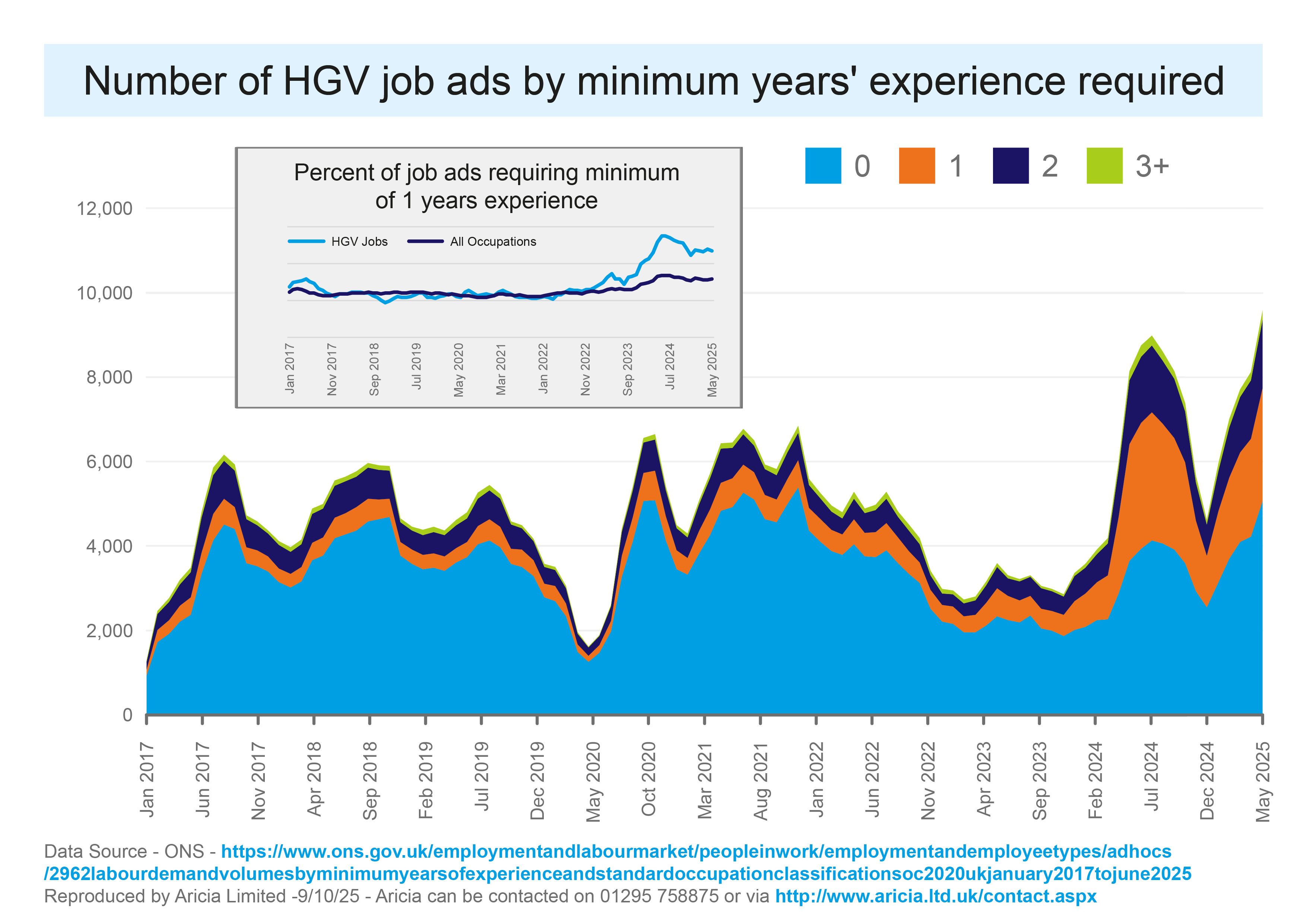Still Hiring Like It’s 1984? Why Logistics Needs to Rethink Risk, Recruitment and Retention

We don’t have a driver shortage. We have a driver placement and retention crisis, and it’s one “we” created.
Yep, that’s right the logistics sector is successful at attracting new people, it’s more successful in persuading people to obtain HGV licences than perhaps we thought. DVSA data shows that 11% of HGV drivers obtained their initial DQC in the past two years and a total of a quarter of all drivers within the past five years.
I’ll say that again: a quarter of all current HGV DQC holders obtained their first DQC in the five years leading up to March this year. One might think, that if we carried on replenishing at that rate, we could expand the current driver workforce with ease …I’m sure you can sense the ‘But’ coming!
Yes, we have an aging workforce and need to plan for many drivers taking and coming up for retirement in the next few years. But, in many cases, we’re not good at getting new drivers started in the career. We’re letting water go out of the plughole faster than the water that’s going into the bath – but it’s not that there isn’t enough water, it’s getting spilt and not just one or two stray drops, but gallons.
There are numerous factors that we let get in the way, this will be just some of them.
Experience Required: The Invisible Barrier
Take those newly qualified drivers. A marked change seems to have taken place at the end of 2023, with specified lengths of experience suddenly being required to a much larger extent than had been the case up till then. And with longer-serving drivers there's a growing emphasis on recent, active experience meaning that past or lapsed experience is being valued less than it once was.
ONS data (see main graph) shows that 50% of HGV job ads where experience is specified require one or more years, double what it has been in the past, and that includes 20% requiring two+ years’ experience. The smaller inset graph shows there has been an increasing general requirement for experience, but that HGV jobs are an extreme example.
Insurance Myths and Missed Opportunities
The chance is that those newly qualified drivers are at the younger end of the spectrum – introducing the insurance hurdle and the perception that younger drivers are likely to have more accidents. Some of the issues are real, some old wives’ tales. Liam Chatfield, Development Manager at RHA Insurance Services, said: “Although it’s difficult to insure young drivers and certain insurers won’t insure them, we can fix that problem and there are insurers that will cover them.”
Still Hiring Like It’s 1984?
Meanwhile, some transport managers are still trying to recruit the drivers of 1984 – they don’t exist. I’m not sure if Lorraine Brooks of ABE Ledbury specified the year at the RHA Future Forum at the Vox in September, or whether it was ‘the eighties’, but 1984 has a nice (dystopian) ring to it. These ‘1984’ companies seem unaware that many people want to work to live rather than vice versa.
If we generalise for a moment, there’s age groups who don’t necessarily have to work long hours, they’ve either paid off their mortgage and the kids have left home, or they can’t get a mortgage and haven’t left Mum & Dad yet. Mid-aged (not necessarily middle-aged!) workers probably do have a mortgage or rent to pay, and families to support, but that support is just as likely to involve collecting the kids from school while their partner brings in another income, as it is doing some extra and unpredictable hours.
You can’t ‘just advertise’ to get a driver for peak: you’re probably offering little in the way of stable employment, unsociable (that’s the polite word!) hours and, at the same time, demanding experience. The people you want will already be employed …by someone else.
We do need to acknowledge that employing younger drivers is not just about insurance premiums and excesses, it is also about the time that a damaged vehicle will then not be available for work. Assessing your own drivers or getting them from an agency (like Blue Arrow) that vets the drivers it supplies, regardless of whether they are newly qualified or not, does de-risk the process to some extent.
The Real Cost of Unrealistic Service Levels
So, do we want our cake and eat it? There seems to be a disparity between demand and available resource. If you want to grow your business, perhaps you do need to take risks with younger, less experienced HGV drivers. If not, are you going to use vans instead? And add to the traffic …and the carbon footprint? Which brings me onto a different question: Do we need to rethink something?
And not just the logistics ‘we’, but our customers and customers’ customers, and yes, even us as consumers. Are we all asking for more than we truly need? If you’re delivering essential food, medicines or critical supplies, you can probably look away now, but otherwise, and particularly if you are in B2C, do you really need to offer your customer a service level that means there are only four hours to the start of a delivery window …and you need an extra driver to do it?
It's those service levels that force last minute bookings for drivers. It’s not just bad for the environment, but it’s also leading to the sort of poor working conditions that mean people don’t want to be drivers. It’s you and me I’m looking at – are we the problem? Should we be demanding (with our purses and wallets) much more thought-out service offers? A good example being the green supermarket deliveries: we’re already in your area at 10-11am.
Time to Rethink What (and Who) We’re Delivering For
Here’s the conundrum; do we want growth? Do we want to cover the country with warehouses and fuel rampant consumerism? And, if we do, how exactly are we going to meet the rising demand, especially with 1.5 million new homes to be built by 2030? If we’re serious about delivering that future, we need to get serious about where the drivers will come from. One part of the solution might be counterintuitive: reducing demand for rapid delivery of non-essential goods. By shifting toward more environmentally and socially conscious delivery models, we might just unlock new capacity and create a logistics sector that’s fit for the future.
Transport managers:
- What’s one hiring practice you could change today to open the door to new talent?
- What sustainability-led service options can you highlight for your customers, that they in turn can promote to their customers?
- What do you need from your recruitment agency partners to help you drive change?
Kirsten Tisdale FCILT, Director – Logistics Consulting, Aricia Limited
Data sources include:
www.gov.uk/government/statistical-data-sets/driver-cpc-qualification-and-training-data
www.ons.gov.uk/employmentandlabourmarket/peopleinwork/employmentandemployeetypes/adhocs/2962labourdemandvolumesbyminimumyearsofexperienceandstandardoccupationclassificationsoc2020ukjanuary2017tojune2025
rhainsuranceservices.uk.net/hgv-insurance-for-young-or-inexperienced-drivers/
Driver Recruitment Solutions



